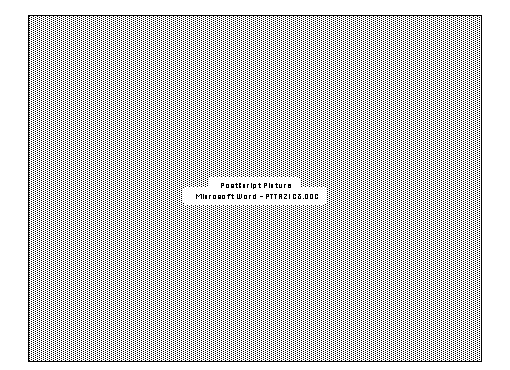
The stable isotope composition of the Upper Permian and Lower Triassic beds at two locations (Kos˜utnik Creek and Brsnina) in the southern Karavanke Mountains has been used to investigate d13C and d18O variations of the well exposed undisturbed P/Tr boundary sequence (Fig. 1). The particular aims of this study have been to complete the previous investigations of the P/Tr boundary in the Karavanke Mountains (Dolenec et al., 1981; Dolonec et al., 1995) and to confirm the systematic changes in d13C and d18O during the interval straddling the P/Tr boundary.
The biostratigraphic and lithostratigraphic boundary between the Lower Triassic-Scythian beds and the underlying Upper Permian beds is transitional and that no exact line can be drawn between them. In the investigated area sedimentation proceeded concordantly across the P/Tr boundary. The Middle Permian Val Gardena Formation of mostly fluvial origin are overlain by more than 250 m of Upper Permian carbonate sequence that was named the Karavanke Formation (Buser et al., 1986). The basal unit of this sequence is represented by an up to 70 m thick evaporitic facies composed of vuggy dolomite which alternates with rare black bituminous shales and grey dolomites. In the lower part of the basal unit only in the Kosutnik Creek the 1.5m thick bed of well bedded black bituminous biomicritic limestone, was found. According to Buser (Buser, 1974; Buser, 1980) it contains tiny sulfur geodes, Bellerophon gastropods and numerous microfossils (Gymnocodium bellerophontis, Permocalculus fragilis, Velebitella triplicata, Mizzia velebitana and Glomospira sp.), that permitted to prove for the first time the Upper Permian age of the Karavanke Formation. The evaporitic sequence is overlain by a thick succession (up to 200 m) of fossiliferous biomicritic dolomites probably deposited in an open lagoon and/or shallow shelf environment. The Upper Permian age of these beds is indicated by calcareous algal assemblages (Mizzia cornuta, Permocalculus sp. Connexia sp.), and very common small foraminifers which belong to Glomospira sp., Agathamina sp. and Hemigordius sp. (Ramovs, 1986) About 70 m below the boundary the porphyrite dyke of Middle Triassic age cuts the Upper Permian beds. Isotopic data show an enrichment of the host rock with light carbon and oxygen isotope (up to - 1.13 for d13C and up to + 17.88” for d18O). However, the 13C and 18O depleted alteration envelopes are only about 4 m thick.
The P/Tr boundary is placed at the end of the sedimentation of thin bedded grey dolomicrite. It is followed by a red coloured more or less terrigenous sequence predominantly composed of well bedded siltstones, mudstones and sandstones alternating with micritic dolomites which contain no characteristic fossils. The thickness of this sedimentary sequence deposited in a very shallow evaporitic part of the basin into which abundant terrigenous material was transported is about 5 m in the Kosutnik Creek and 25 m at Brsnina. In the investigated area these beds are overlain mostly by dark grey and brown micritic and sparitic limestones intercalated with oolitic limestone, marls and shales.
The oxygen and carbon isotope data show that the Upper Permian carbonates in the Karavanke Mountains are characterized by the most pronounced enrichment in 13C and 18O relative to the Lower Triassic-Scythian carbonate rocks. The isotopic composition of the Upper Permian carbonates shows the variation of d13C mostly in the range between + 0.69” and + 3.83” (PDB) and d18O between + 24.3” and + 28.73” (SMOW). Similar values were reported from the Upper Permian beds in the Karavanke Mountains of Trzic area (Dolened et al., 1995). The carbon and oxygen isotope compositions of the Triassic stratigraphic unit are distinctly different from those of the Upper Permian beds. The carbonates from this unit have the lightest d13C and d18O values generally ranging from - 1.24” to + 1.96” and from + 20.57” to + 26.05”. Outside this range is the host rock of the porphyrite dyke.
The transition from Permian to Triassic is characterized by a shift of d13C and d18O towards more negative values. The d13C and d18O anomalies (of about 4” for d13C and 7” for d18O) are not confined strictly to the biostratigraphically defined P/Tr boundary. A decrease of d13C and d18O begins about 40 m below the boundary and continues through the boundary to the Lower Scythian beds up to some metres upward. The isotopic changes are similar to those found in Permian-Triassic carbonates of the Carnic Alps in Austria (Magaritz and Holser, 1991). A negative d13C excursion reflects the global changes in the carbon cycle and/or climatic changes probably controlled by eustatic oscillations of the Bellerophon Sea level and by tectonics. The variations of d18O cannot be interpreted only in terms of water temperature. It may have also been caused by change in d18O of the water, decrease of salinity, post depositional alterations, mineralogy of the rocks or some combinations of all the mentioned possibilities. However the cause of such large shift in d18O at the P/Tr boundary also observed by Magaritz and Holser (1991) in the Carnic Alps still remains open.
Buser, S., Grad, K., Ogorelec, B., Ramovs, A. & Sribar, L., Mem. Soc. Geol. It. 34, 195-210 (1986).
Buser, S., Carinthia II 84, 27-37 (1974).
Buser, S., Guidebook, Basic Geological Map 1:100.000, sheet Celovec (Klagenfurt). 62 pp. (Federal Geol.
Dolenec, T., Ogorelec, B. & Pezdic, J., Geologija 24/2, 217-238 (1981).
Dolenec, T., Ogorelec, B., & Pezdic, J., First Croatian Geological Congress, Proceedings, 163-165 (1995).
Survey, 1980).
Magaritz, M. & Holser, T., Abh. Geol. B. A 45, 149-163 (1991).
Ramovs, A., Permian and Permian-Triassic boundary in the South Alpine segment of the Western Tethys. (Italian IGCP 203 Group, eds.) (1986).
Fig. 1: *18O and *13C data from localities sampled.